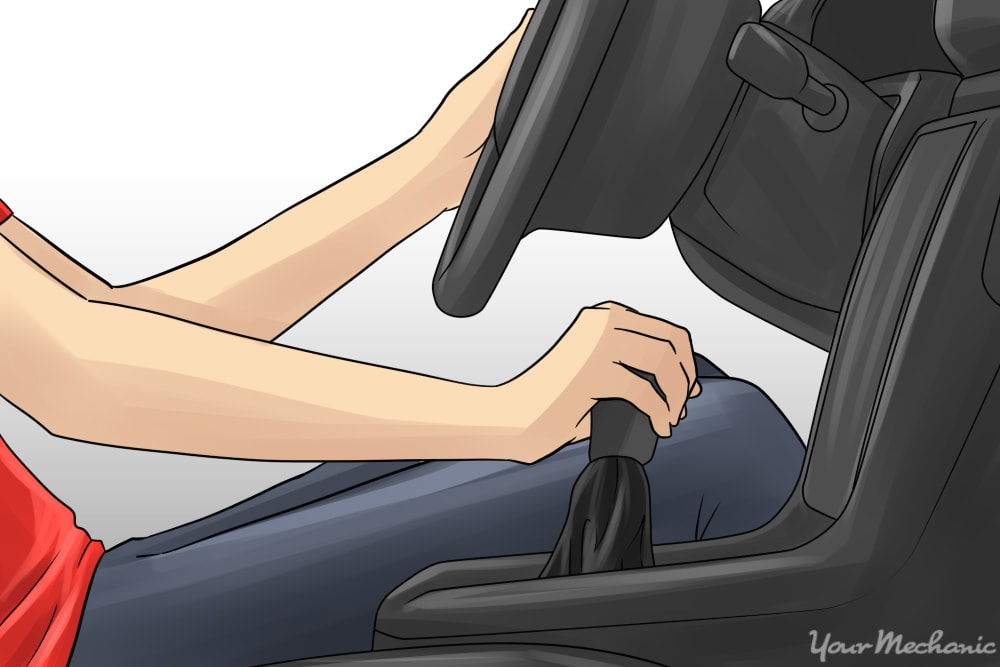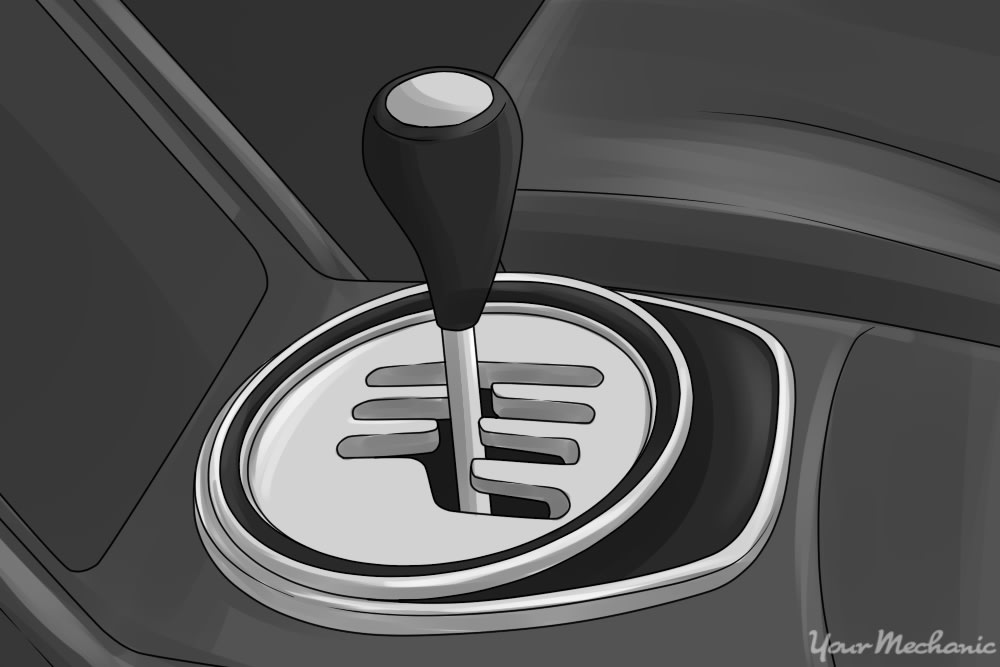

The transmission allows a vehicle to switch smoothly between gears. In an automatic transmission, the vehicle computer switches gears for you. In a vehicle with a manual transmission, you must first let your foot off the gas, depress the clutch, move the gear shifter into gear, and then let off the clutch again while simultaneously pressing the gas pedal, a delicate balance that many young car drivers have trouble with when first driving a vehicle with a manual transmission.
Manual transmissions offer a better fuel economy than an automatic transmission, as well as better performance and control due to the greater number of gears. And while driving a vehicle with a manual transmission is more involved than simply putting the car into gear, pushing the gas, and driving, once you learn how to balance the gas and the clutch and learn to switch gears, it is an enjoyable experience, giving you more control of your vehicle on the road.
Part 1 of 2: How a manual transmission works
To truly take advantage of the added fuel economy, performance, and control that a manual transmission offers, you need to have an understanding of how it works, including the location of the gear shifter and the different parts involved in the shifting process.
Step 1: Understand the clutch. The clutch of a manual transmission disengages the transmission from the engine when stopped and when shifting gears.
This allows the engine to keep running even when there is no need for the vehicle to remain in motion. The clutch also stops torque from being applied to the transmission when switching gears, allowing the driver to easily shift to a higher or lower gear using the gear shifter.
The transmission is disengaged by using the left pedal in the driver's side of the vehicle and is called the clutch pedal.
Step 2: Understand the gear shift. Usually located on the floor of the vehicle, some gear shifters are found on the drive column, on the right side of or beneath the steering wheel.
The gear shifter allows you to shift into the desired gear, and most have the shifting pattern they use printed on them.
Step 3: Understand the transmission. The transmission houses the main shaft, planetary gears, and the various collars that engage and disengage according to the gear desired.
One end of the transmission connects via the clutch to the engine, while the other end connects to the drive shaft to give power to the wheels and thus propel the vehicle.
Step 4: Understand the planetary gears. The planetary gears sit within the transmission and help turn the drive shaft.
Depending on the gear, the vehicle moves at various speeds, from slow while in first to fast when in fifth or sixth gear.
The planetary gears are comprised of the sun gear, which attaches to the main shaft and the planetary gears, all of which sits inside a ring gear. While the sun gear spins, the planetary gears move around it, either around the ring gear or locked into it depending on the gear the transmission is in.
A manual transmission contains multiple sun and planetary gears, set up to engage or disengage as needed when shifting into higher or lower gears in a vehicle while driving.
Step 5: Understand gear ratios. As you shift through the gears in your manual transmission, you go into different gear ratios with the lower ratio equalling the higher gear.
The gear ratio is determined by the number of teeth on the smaller, planetary gears in ratio to the number of teeth on the larger, sun gear. The more teeth there are, the faster the gear will spin.
Part 2 of 2: Using a manual transmission
Now that you understand how a manual transmission works, it is time to learn how to use it while driving on the road. The most important part of using a manual transmission is learning how to work the gas and clutch together to drive and stop. You also need to learn where the gears are and how to shift without looking down at the gear shifter. As with anything, these skills should come with time and practice.
Step 1: Know the layout. For your first time in a vehicle with a manual transmission, you need to familiarize yourself with the layout.
Determine where the gas, brake, and clutch are located. You should find them in that order from right to left on the driver's side of the vehicle. Locate the gear shifter, which is somewhere in the area of the center console of the vehicle. Just look for the knob with the gear shift pattern on top.
Step 2: Shift into first. After becoming familiar with the vehicle's layout, it is time to start the vehicle.
Start by making sure the shifter is in first gear. Do this by holding in the clutch fully and releasing the gas pedal. Once the gas pedal is released, move the shifter into first gear.
Next, release the clutch pedal while slowly applying the gas pedal. The vehicle should move forward.
- Tip: A great way to practice shifting gears is with the engine off and the emergency brake on.
Step 3: Shift into second. After attaining enough speed, you need to shift into second gear.
As you gather speed, you should hear the engine Revolutions Per Minute (RPMs) getting higher. Most vehicles with a manual transmission require you to shift into a higher gear around 3,000 RPMs or so.
As you get more experience driving a vehicle with a manual transmission, you should get a better idea of when you need to shift. You should hear the engine sound like it is starting to overwork. Once you shift into second, the RPMs should drop, and then begin to build again.
Step 4: Shift into higher gears. Continue shifting through the gears until you attain the speed you want.
Depending on the vehicle, the number of gears usually range between four and six, with a higher gear number reserved for performance cars.

Step 5: Downshifting and stopping. When downshifting, you shift the gears into a lower gear.
You can downshift through the gears as you slow. Another option is to place the vehicle into neutral, decrease your speed, and then put the transmission into the appropriate gear for the speed you're going.
To stop, place the vehicle in neutral and, while pressing the clutch, also apply pressure to the brake pedal. Once at a complete stop, just put the vehicle back into first gear to go again.
Once you are finished driving and have parked, put the vehicle in neutral and engage the parking brake. Neutral is the shift position in between all gears. The gear shift should move freely when in the neutral position.
Step 6: Drive in reverse. To place the manual transmission in reverse, put the gear shifter into the position opposite of first gear, or as designated on the gear shift of your year, make, and model of vehicle.
This involves running the gears in reverse, so make sure you are fully stopped before putting the transmission in first gear again. Otherwise, you can damage the transmission.
Step 7: Stopping on hills. Take care when stopping on hills while driving a vehicle with a manual transmission.
Vehicles with manual transmissions can roll backward when stopped on an incline. Staying stopped is easy enough, as all you do is hold the clutch and brake in at the same time while stopped.
One method is to keep both the clutch and brake pedal depressed. When it is your turn to go, bring the clutch pedal up until you can feel the gears start to engage slightly. At this point, quickly move your left foot from the brake to the gas pedal and start applying pressure while slowly lifting your foot off of the clutch pedal.
Another method is to use the handbrake in conjunction with the clutch. When you need to give the car some gas, apply pressure to the gas pedal while you slowly release pressure on the clutch pedal and at the same time release the handbrake.
A third method is called the heel-toe method. When you need to give your vehicle the gas, rotate your right foot, which is on the brake pedal, while you keep your left foot on the clutch pedal. Slowly start to press the gas pedal with your right heel, but keep pressure on the brake pedal.
Let off the clutch slowly while giving the car more gas. Once you feel it is safe to remove your foot from the clutch pedal without fear of the vehicle rolling back, move your right foot fully to the gas pedal and off the brake.
Driving a vehicle with a manual transmission is easy once you know how. With practice and experience, you should get the hang of operating a manual transmission in no time. If, for some reason, you have a problem with your vehicle's manual transmission, you can Ask a Mechanic to learn what you should do to get it working properly again; and if you notice any grinding noises coming from your transmission, have one of YourMechanic’s technicians perform an inspection.






